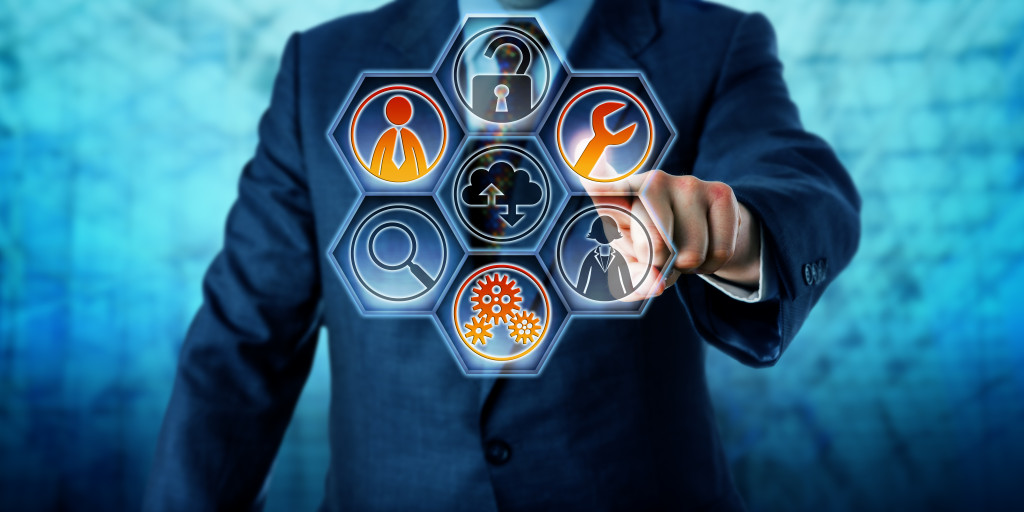One lesson from the pandemic is the necessity for a new technological framework and mental paradigm. Every industry will eventually have a product or an enabler made possible by some technology. Those who are unable to take part in the digital revolution will be left in the dust.
Information technology (IT) departments will no longer be seen as individuals repairing out-of-date hardware and installing Windows programs on computers. Companies’ IT divisions of the future will be skilled in developing and deploying bespoke apps that increase company productivity while also improving the consumer experience.
The “third platform” technologies — those that bring together mobile, cloud, the Internet of Things (IoT), cryptocurrency, artificial intelligence (AI), big data, and robots — will be critical in enabling the next generation of productivity and innovation.
The convergence of these technologies fundamentally changes the way we live and do business, eventually influencing how we earn money. Management teams should reevaluate their strategies in light of the following technological developments as they look forward to 2022.
Paradigm Shifts in Investment
The average private company’s IT department lacks the resources and expertise to install third-platform technology such as AI, which is expensive to implement. The new IT department will comprise higher-caliber, higher-paid experts capable of process optimization. IT expenditure as a proportion of sales surpasses 8% for all businesses but is much lower in commercial and industrial firms (closer to four percent). That’s where business funding firms revolutionize scaling.

Global Scale Digital Renovations
The most visible indicator of digital transformation has been the increased use of collaboration software, customer relationship management (CRM) software, and other software programs that users need on-demand on their devices. Users need all essential work information on any device at all times, from sales to operations teams. Private businesses are seeking more agile alternatives than conventional enterprise resource planning (ERP) systems. They may find such usefulness in a plethora of applications that offer real-time information.
Client-facing technologies that have a direct effect on consumers are being sought after by providers. Take, for example, the app Zocdoc. It allows you to locate a doctor in your comprehensive risk assessment and visit them on the same day. The equipment that connects the patient to the doctor is nearly as valuable as the service provided by the physician.
This kind of disturbance is all around us. Restaurants that switched to digital menus and contactless payments (such as McDonald’s) fared better throughout the pandemic. Chipotle just opened its first “digital-only” location. Because suppliers now have greater access to consumer information and demographic data, electronic payments amplify the benefits of digitization.
Advanced Application of Automation and Robotics
According to McKinsey, robotics and automation use grew substantially despite significant delays caused by COVID-19 procedures and delayed imports from Europe, Japan, and Korea. If you hear the term “automation and robotics,” it’s likely that the speaker is referring to industrial automation. Automating physical operations via the use of physical robots and sophisticated control systems is known as industrial automation. A vehicle plant with a high degree of autonomy is a good illustration of this.
When individuals discuss automation in general, they are generally talking about software automation. The use of software to do activities that humans undertake with computers is known as software automation. Providers, in particular, searched seeking technology that might replace labor. Robots are not only quicker, cheaper, and more precise; they also do not get ill. The earliest industrial robots were designed to replace tasks too expensive or hazardous for people to perform.
Second Reality
Reality technologies are finding their way into fields including education and healthcare. The pandemic has increased the use of remote operations and other healthcare applications, including self-service alternatives. Today, technology allows patients to get an eye exam using high-resolution cameras and then be guided through several eyewear choices depending on their prescription.
Extended reality (XR), virtual reality (VR), and mixed reality (MR) have a plethora of commercial and industrial uses. Augmented reality is already being used in training and customer service by several businesses.
The pandemic has irrevocably changed the course of our companies and the way we think about workplace safety. The convergence of these technologies will offer ways to slow the spread of COVID-19. AI and machine learning will allow continual development and create a safer workplace. In the United States and Europe, the designers of these technologies are under more scrutiny. Amazon, Apple, Facebook, and Google are all under scrutiny due to privacy, security, and corporate accountability. More restrictions seem to be on the way. Let us not forget that before COVID-19 dominated our everyday conversation, most company owners were preoccupied with cybersecurity. Businesses must continue to invest in technology to thrive in 2021.

